When you’re new to RVing, starting small with a fun, easy RV staycation is a great way to learn the ropes. But once you’re more comfortable, there’s so much to see in the US. And if you’re lucky enough to take a few weeks off, a cross country road trip is the best way to explore this country’s diverse terrain.
The problem is that there’s so much to see and do:
Do you use a northern route to hit destinations like Yellowstone or Glacier National Park?
Do you brave the Rocky Mountain passes to explore the Great Sand Dunes or the Black Canyon of the Gunnison?
Or do you head south for warmer weather and destinations along the Gulf Coast?
If you find yourself staring at a map, overwhelmed by the options and possibilities, let’s narrow the scope and help you plan a cross country road trip that’s right for you and your companions.
How to Plan a Cross Country Road Trip
Deciding where to go is just the start. So let’s help you learn how to plan a cross-country road trip from start to finish.
Set Your Timeline
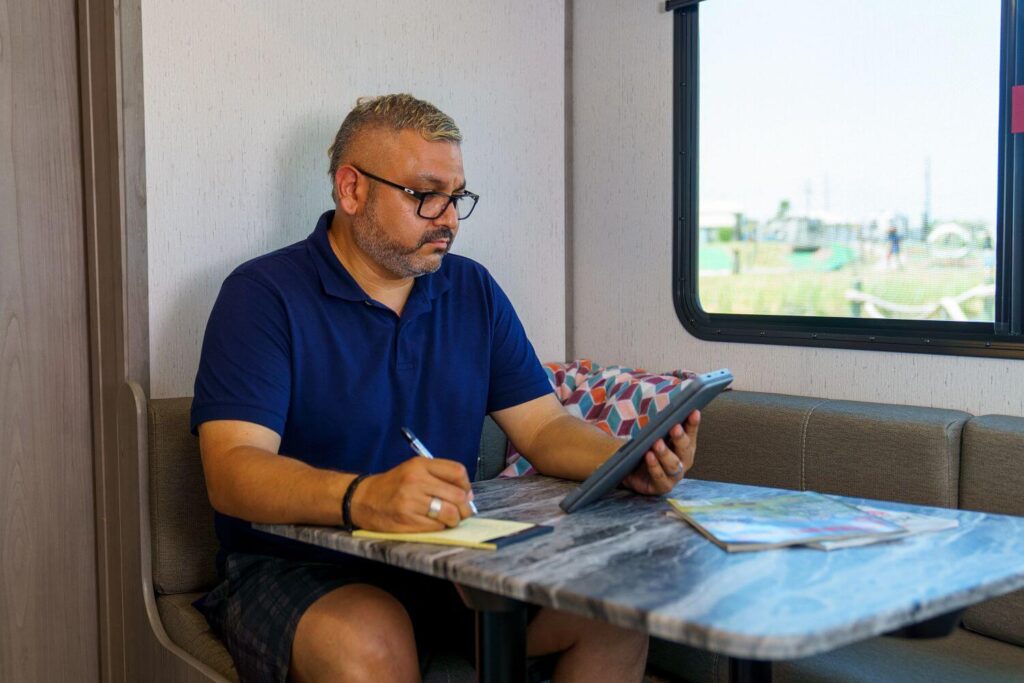
Photo by Camping World
A good road trip plan begins with understanding how long you’ll be away. With so much to see in the US, we’d recommend a minimum of four weeks for a cross country road trip. Remember, you need time to travel back across unless you rent an RV in one location and drop it off in another.
Even four weeks can be short if you want to spend more than 2-3 days in any destination. For example, my partner and I recently planned a trip from Hendersonville, NC to Truckee, CA. We had six weeks before my partner had to return to work, and we knew we wanted the final two weeks in Truckee. That gave us four weeks to hit our preferred destinations.
Realistically, a cross country road trip should be a full summer’s adventure. If you’re lucky to work remotely, this will be easier. Explore other ways to make money traveling in an RV if you don’t already have a career that allows you to be a digital nomad.
Create a Budget
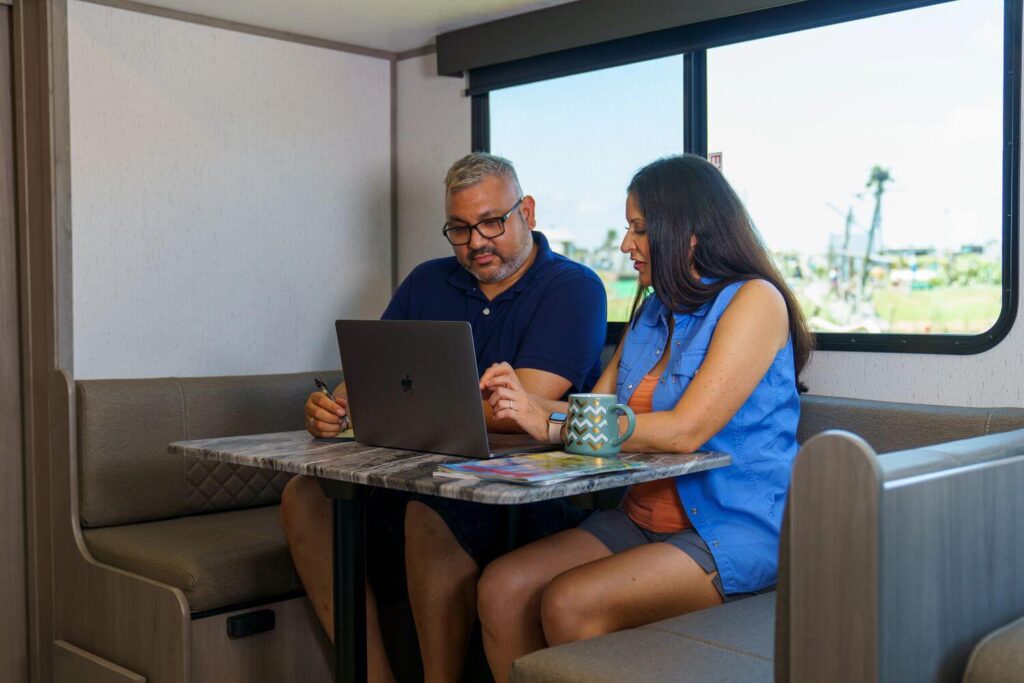
Photo by Camping World
Next, it’s time to decide how much you’ll spend on your trip. It helps to break your budget into at least four parts: fuel, lodging (i.e., campgrounds), food, and recreation. You may include additional budget categories based on the priorities of your trip.
For fuel expenses, factor in average fuel prices along your route, your average fuel economy, and any additional mileage you may travel off your route to visit landmarks or attractions. For example, our trip involved setting our trailer up in several campsites and then using our truck to explore areas like Badlands National Park or Crazy Horse Memorial in the Black Hills.
For camping stays, ensure you compile any memberships that offer campground discounts as a benefit. This can help you come in under budget when you actually book campsites later in the planning process.
Your food budget largely depends on the size of your travel party and your food preferences. Will you be preparing most meals in your RV? Or do you prefer sampling local fare when you reach a new destination? Factor these preferences in when setting the food budget for your trip.
Finally, let’s talk about your recreation budget. This includes fees associated with your national park pass, guided tours, historical museums, or anything else you like to do for fun while RV camping.
For us, many of these fees are spontaneous, beyond our national park pass. We like to hike, paddle, and bike in our free time, which are relatively affordable activities in most places. But we also built flexibility into our budget to allow for the occasional movie night or rainy-day arcade visit.
Select Your Must-See Destinations
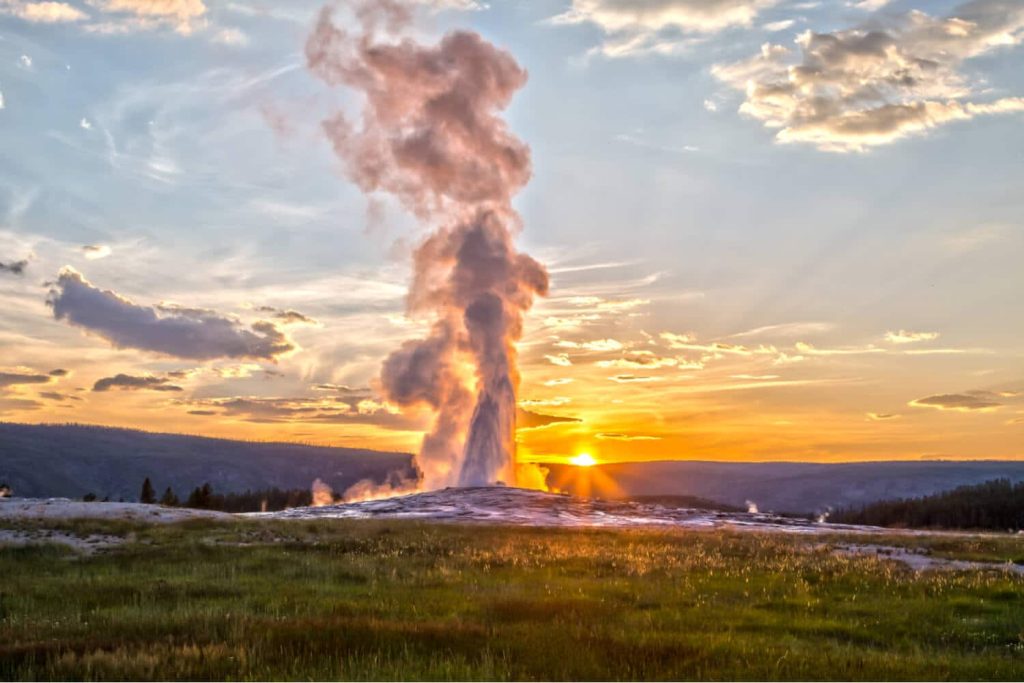
Photo by Susanne Pommer via Shutterstock
With your timeline set and a budget mapped, it’s time to select where you want to go. But let’s be honest, most of us start here. Many cross country road trips are born from a desire to visit a singular destination far across the country. For us, it was primarily Yellowstone in the spring.
From there, we looked at the other national parks or interesting attractions between our starting point and Yellowstone, which is how we added stops in Badlands National Park and the Black Hills to our itinerary.
From there, we knew we had friends to see throughout Oregon. So we found a unique destination in southern Idaho to explore before spending a day in Boise, a city we had yet to visit.
All in all, your must-see destinations will dictate your route. Even if you have 3-4 months for your cross country road trip, it’ll be tough to zig-zag back north and south to see everything. Select your must-see destinations and fill in the gaps between them based on your driving route.
Dial in Your Driving Route
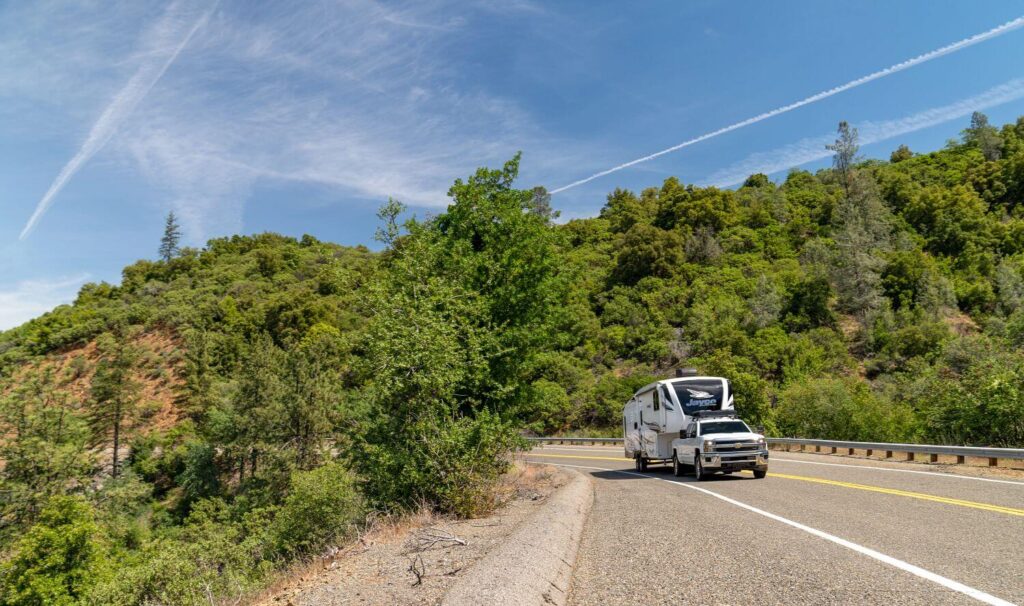
Photo by Camping World
Okay, this step and the previous one go hand-in-hand. But when you’re driving a motorhome or towing a trailer, there are additional considerations compared to road tripping in a passenger vehicle.
First and foremost, it’s important to ensure all roadways you plan to travel on boast sufficient height clearance for your RV. There are numerous smartphone apps to help you find RV-friendly driving routes and parking spots along the way.
From there, it’s also important to look at the terrain along your route. On our way from the Black Hills to Yellowstone, we opted for the route up and around the Bighorn Mountains on I-90 through Billings and Bozeman, MT.
The other route through the mountains and into Yellowstone’s eastern entrance was technically almost 100 miles shorter. But having previously done that route as a truck camper, I knew it would be slower to tow my trailer. In this case, the longer route actually saved us time and reduced the stress on our tow vehicle.
Read these tips for navigating mountain grades to ensure safe towing on your road trip.
Find Campgrounds
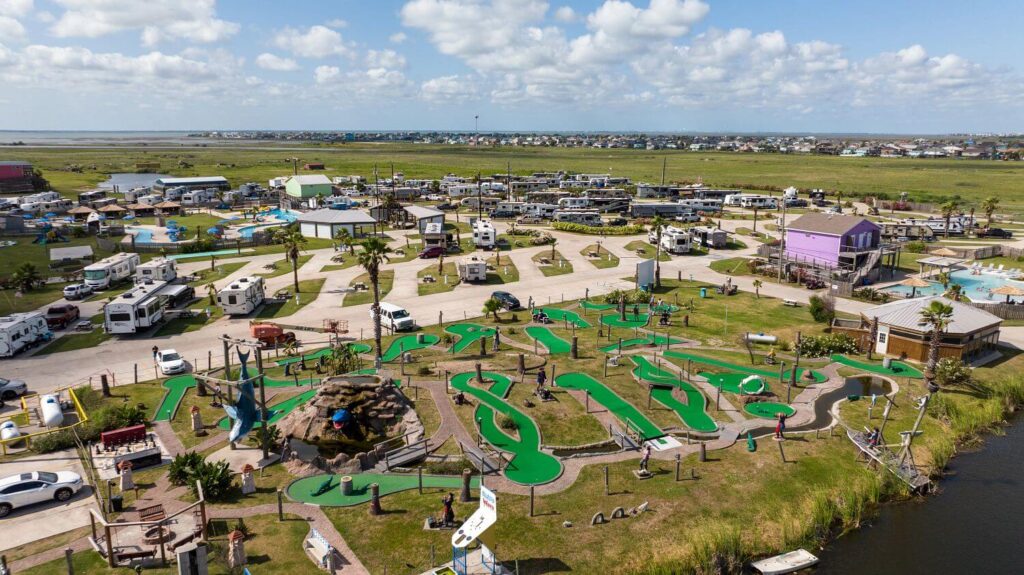
Photo by Camping World
We recommend dialing in your driving route before selecting campgrounds because you’ll have a better idea of what’s along your route and what’ll require a bit of a side trip. Don’t get me wrong, though. Many of the best campgrounds are worth a side trip.
If you’re a Good Sam member, using their campground directory is the best way to find highly-rated RV parks and resorts where you can enjoy discounted stays.
For popular destinations, you’ll need to reserve well in advance. Follow recommendations from the National Park Service if you’re interested in camping inside a particular park. Our national park guides are a great resource for finding park campgrounds and options for staying outside each park.
Explore our complete collection of guides for RVing the national parks.
Additionally, you might find Google Maps as useful for finding campgrounds as it is for planning your driving route. I use search terms like ‘rv parks’, ‘campgrounds’, and ‘camping’ to identify different RV camping opportunities within a chosen search area. Then I compare ratings, amenities, and proximity to other attractions to narrow my options.
Ultimately, you choose which amenities are most important to you. For me, the priorities are internet connectivity, full hookups, and proximity to hiking or biking trails.
What are your most preferred RV park amenities?
Check out the results of our survey on the top-ranked campground amenities according to you.
Get Roadside Assistance Coverage

Photo by Camping World
Things don’t always go as planned on any road trip. When you’re on the road as much as is required to complete a cross country road trip, the odds of encountering the unexpected increase.
Fortunately, you can plan for the unexpected by ensuring you have resources at your disposal. Good Sam’s Roadside Assistance helps you get back on the road so your road trip continues as outlined.
Their levels of roadside coverage include assistance with flat tires, dead batteries, emergency travel and medical expenses, and being locked out of your vehicle. They also offer coverage for trip interruptions and fuel and fluid delivery, including the delivery of up to five gallons of gas if you run out on the side of the road.
Better still, even Good Sam’s most basic Roadside Assistance plan offers unlimited distance towing to the nearest service facility. Explore all Good Sam services for RVers, including RV Insurance, TravelAssist, and Tire & Wheel Protection.
Research Guided Audio Tours
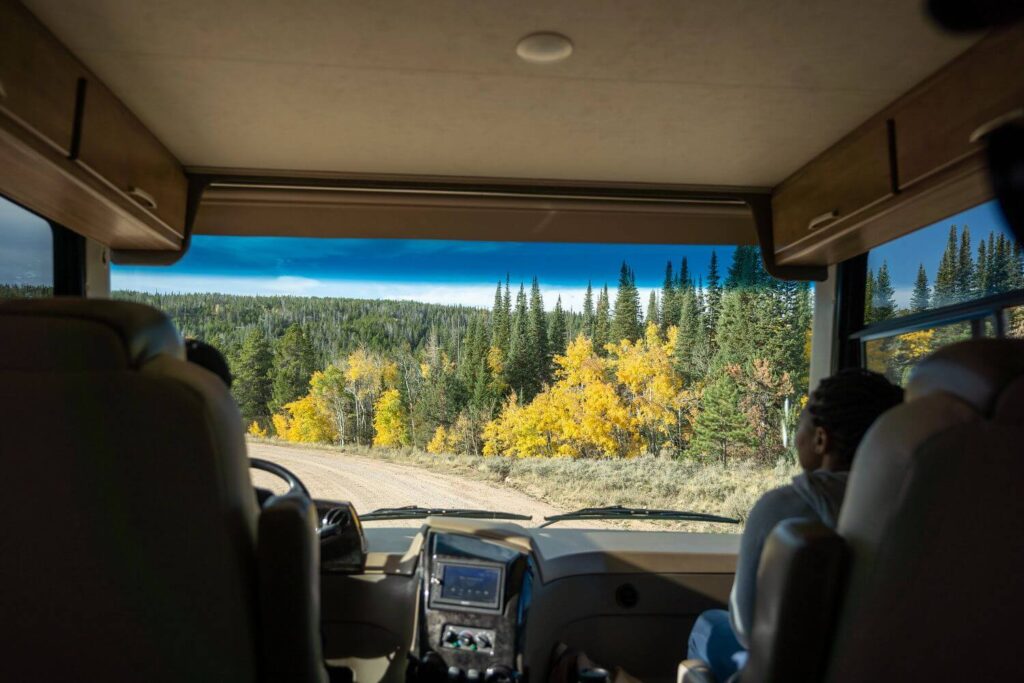
Photo by Camping World
On a long road trip, you must get creative to pass the driving time. I love creating road trip playlists and listening to podcasts or audiobooks, but I recently discovered guided audio tours through apps like Autio and GuideAlong.
Pro Tip: Good Sam members can enjoy a discounted annual subscription to Autio. Start your free trial today.
We’ve listened to tours through the Badlands, Black Hills, and Yellowstone so far. They led us to scenic highways we otherwise would’ve passed and taught us interesting facts on wildlife management, habitat protection, and natural and human history in these regions.
On a cross country road trip, it’s nice to have multiple entertainment options at your disposal. Keep things fresh by switching from music to audiobooks to guided tours at your leisure.
Leave Room for Spontaneous Exploration
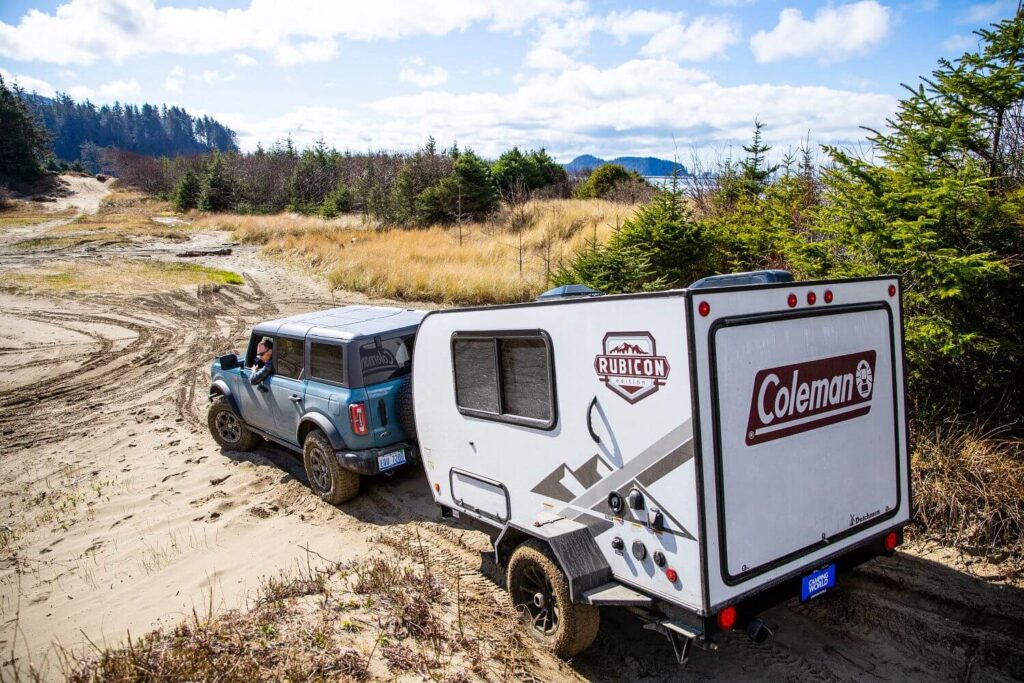
Photo by Camping World
It’s clear you’ll need a plan for a cross country RV road trip, but you’ll also need room for spontaneous exploration. You can’t plan everything, so leave some room in your itinerary for unplanned detours.
On our trip, our unplanned detours led us to delicious Mediterranean cuisine and the most intriguingly designed scenic highway I’ve ever driven.
Where will your whims take you on your cross country road trip?
We hope this gives you a structure to plan an epic cross country RV trip. Here are a few more trip-planning resources you might find useful:
- The Best Resources for RV Trip Planning
- How to Plan a Family RV Trip
- How to Plan a Dog-Friendly Road Trip
What are the top three destinations on your road trip bucket list? Share them in the comments below.
The post How to Plan a Cross Country Road Trip appeared first on Camping World Blog.
By: Tucker Ballister
Title: How to Plan a Cross Country Road Trip
Sourced From: blog.campingworld.com/campgrounds-travel/how-to-plan-a-cross-country-road-trip/
Published Date: Fri, 07 Jul 2023 08:00:00 +0000
---------------------------------------------
 CampingSurvivalistHuntingFishingExploringHikingPrivacy PolicyTerms And Conditions
CampingSurvivalistHuntingFishingExploringHikingPrivacy PolicyTerms And Conditions
